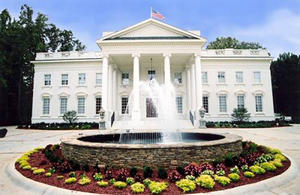Domestic terrorism Police chiefs at White House to discuss domestic radicalization
Law enforcement officials from state and local agencies across the United States gathered on Wednesday at the White House to discuss the delicate balance between safeguarding against domestic extremism and maintaining the trust of the residents they serve

Officials met at the White House to discuss domestic radicalization // Source: laodong.com.vn
Law enforcement officials from state and local agencies across the United States gathered on Wednesday at the White House to discuss the delicate balance between safeguarding against domestic extremism and maintaining the trust of the residents they serve.
With growing concerns over domestic radicalization ranging from Islamic fundamentalism, right wing extremists, white supremacists, local police officers have struggled to distinguish between those who simply hold extreme ideologies and those that acutely intend to commit violence or incite others.
“Where do you draw the line between what they say and what they do,” questioned Robert Haas, the police commissioner of Cambridge, Massachusetts, who attended the meeting along with forty-six other senior local, state, and federal law enforcement officials.
The meeting was the first time administration officials had discussed the issue of countering violent extremism with so many senior law enforcement officials in the same room.
“The important role of local law enforcement is a key part of the administration’s approach to countering violent extremism in the homeland,” said John Brennan, President Obama’s counterterrorism adviser. “Law enforcement officials work with communities every day and understand how to build partnerships to address this tough challenge.”
According to analysts from the FBI, DHS, and National Counterterrorism Center, an individual’s origin, religion, ethnic background, and socioeconomic status are not good indicators for violent extremism.
In their examination of sixty-two cases of homegrown extremists, analysts identified several key similarities between the cases that law enforcement officials could use to help detect emerging threats. Key indicators included increasingly speaking out against the government, purchasing weapons, ammunition, or explosive materials, or joining a group that advocates violence.
The White House stressed that Muslim communities should not be singled out, and more importantly, viewed as allies in the fight against terrorism. Unnecessarily focusing on Muslim communities or monitoring them can lead to distrust as it has in New York, where the police department has come under heavy criticism for collecting intelligence on the daily lives of Muslim residents, even those without criminal records.
“We don’t want to be seen as taking a step back and violating that trust that we have with folks,” Haas said.
